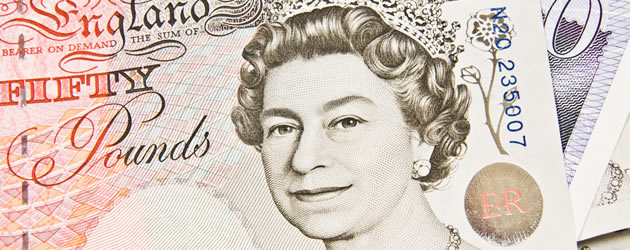GBP/EUR Conversion Rate Predicted to Rally after Negative Eurozone Inflation
The Pound Sterling to Euro (GBP/EUR) exchange rate rallied by around 0.6% on Wednesday afternoon.
Although British economic data produced mostly disappointing results, the Pound strengthened versus its major peers during Wednesday’s European session. Even a downward revision to second-quarter Gross Domestic Product wasn’t enough to offset Sterling gains. The appreciation can be attributed to data which showed that the Current Account deficit narrowed beyond expectations in the second-quarter. This will give fodder to Chancellor George Osborne after the leader of the opposition questioned the effectiveness of austerity. With traders fearing massive policy changes with the rise of the Labour Party as Jeremy Corbyn attracts new voters, any sign that government debt is being reduced will bolster optimism for a long-term Tory rule.
The Pound Sterling to Euro (GBP/EUR) exchange rate is currently trending in the region of 1.3539.
The shared currency plummeted across the board on Wednesday after domestic data produced a number of disappointing results. Of particular disappointment was Eurozone Consumer Prices which fell to -0.1% in September. This has prompted many investors to speculate that the European Central Bank (ECB) will look to expand quantitative easing in order to provoke price pressures. Also weighing heavily on sentiment towards the single currency was Eurozone Unemployment Rate which held at 11.0% after the previous figure was upwardly revised. This added to fears that potential job losses in Germany’s automotive industry will contribute heavily to a rise in Eurozone unemployment over the coming months.
The Pound Sterling to Euro (GBP/EUR) exchange rate was trending within the range of 1.3448 to 1.3584 during Wednesday’s European session.
GBP/USD Commercial Spot Rate Forecast to Edge Higher after US Mortgage Applications Slumped
The Pound Sterling to US Dollar (GBP/USD) exchange rate advanced by around 0.1% on Wednesday afternoon.
In response to the British Current Account Data, the Office for National Statistics (ONS) stated; ‘The narrowing of the current account deficit was mainly due to a narrowing in the deficit on the trade account and a small narrowing in the deficit on the primary income account, slightly offset by a small widening in the deficit on the secondary income account. The UK has run a combined current and capital account deficit in every year since 1983, and every quarter since Quarter 3 1998.’ The British Treasury also pointed out that ‘as a share of GDP, this is the smallest current account deficit since 2013 Q2 and the smallest trade deficit since 1998 Q1.’
The Pound Sterling to US Dollar (GBP/USD) exchange rate is currently trending in the region of 1.5188.
With so much uncertainty regarding the timing of a Federal Reserve interest rate hike, with officials giving divergent opinions, the US Dollar has seen quiet trade on Wednesday. A slight depreciation can be linked to mixed results from domestic data. Of particular disappointment was MBA Mortgage Applications for the week ending September 25th which declined by -6.7%. With Fed Chairwoman Janet Yellen due to make an address later during the North American session, traders will be reluctant to invest heavily ahead of the speech.
The Pound Sterling to US Dollar (GBP/USD) exchange rate was trending within the range of 1.5105 to 1.5214 during Wednesday’s European session.
GBP/EUR/USD Exchange Rates Forecast: Pound to Hold Gains ahead of Yellen Speech
Given the absence of further influential domestic data to provoke changes, the Pound Sterling to Euro (GBP/EUR) and US Dollar (GBP/USD) exchange rates are likely to hold gains for the remainder of Wednesday’s European session. In the latter stages of the North American session, however, the speech from Fed Chair Janet Yellen could provoke market volatility. With that being said, many expect Yellen to skirt around issues regarding Fed policy given the address is centred on community banking.
Over the remainder of the week, there will be several domestic data publications with the potential to provoke changes for the GBP/EUR and GBP/USD exchange rates. Although influential European data will be thin on the ground, The British Manufacturing and Construction PMIs will be of significance. In terms of US data, ISM Manufacturing, Unemployment Rate and Change in Non-Farm Payrolls will ignite market volatility.



